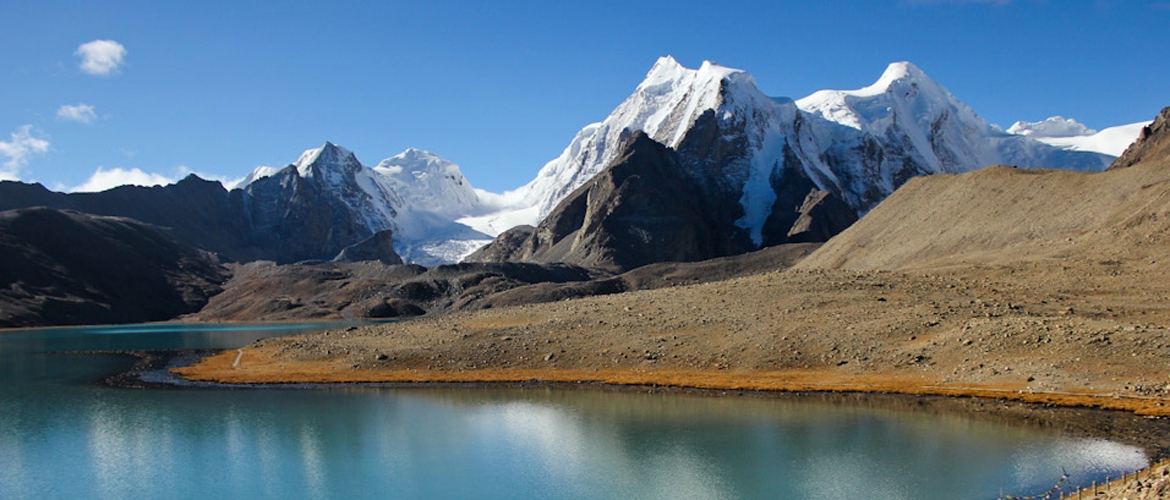
This six day trek takes you into an area adorned with a multitude of pristine, crystal clear lakes. As you walk amidst the shimmering lakes you’ll be treated to stunning views of the entire Himalayan mountain range and some of the world’s highest peaks including Mt. Everest, Jomolhari, Masang Gang, Jichu Drake, Gangche Ta and many more.
During the trek an entire day will be dedicated to visiting some of the more picturesque lakes, fishing and resting. The trail also takes you through several Bhutanese villages so you can get a good idea of traditional Bhutanese village life as you make your way back from the lakes.
While this is a somewhat strenuous trek, it is well worth the effort because of the tranquility and beauty of natural landscape that you will enjoy during the journey. The best time to embark on this trek is between April-June or September –October.
Day 1: Gynekha – Gur (Distance 7 km, 5 hours, 550 m ascent, 210 m descent, camp altitude 3,290 m)
The trek starts at beautiful Gynekha village and begins with a short descent to the river. After crossing the river you start climbing until you reach a huge rock platform from where you have a picturesque view of the valley below. After another two hours you reach Gur, an area of yak pastures located just below the main trail.
Day 2: Gur – Labatama (Distance 12 km, 5 hours, 1,220 m ascent, 110 m descent, camp altitude 4,300 m)On the second day, the trail takes you across the high ridges from where you can truly appreciate the rugged beauty of your surroundings and the mountain vegetation. The path winds through refreshing meadows adorned with wild flowers and asparagus (in spring). The first mountain pass you cross is marked by a huge cairn and gives a spectacular view of Kanjenjunga (Sikkim) and a number of the Bhutanese Himalayan peaks. As you descend the pass you will be able to see the entirety of the Dagala mountain range including meadows and yak herder camps. Once you have descended into the Labatama valley you begin climbing gradually through the valley, passing several yak herder huts before you arrive at Uthso Tsho. The campsite is right next to the lake.
Day 3: Labatama
This day will be dedicated to relaxing and recuperating at Labatama. It is an ideal to taker an excursion to any of three nearby lakes: Reli Tsho, Hen Tsho and Jama Tsho. Hikers are encouraged to take the opportunity to engage in some trout fishing as the location is ideal. Permits are required for fishing so you should request your tour operator to make the necessary arrangements beforehand.
Day 4: Labatama – Panka (Distance 8 km, 6-7 hours, 260 m ascent, 520 m descent, camp altitude 4,000 m)
The trail climbs along the western side of Dala Tsho up to a saddle at 4,520m. From here onwards you will have a fantastic view of the majestic Himalayan peaks all through the descent. The mountain peaks visible include Mt. Everest (Nepal), Mt. Kanchenjunga (Sikkim), Mt. Jomolhari, Mt. Jichu Drake, Mt. Tshering Gang, Mt. Khangbum, Mt. Masang Gang, Mt. Tsende Gang and Mt. Gangche Ta. If you want an even better view, you can climb a peak close to the saddle with an altitude of 4,720m. From the saddle the path descends, passing some yak herder huts to Doccha Chhu. You follow the river for a while, but stay higher up on the slope to reach Panka with ascents and descents along the way.
Day 5: Panka – Talakha (Distance 8 km, 5-6 hours, 180 m ascent, 110 m descent, camp altitude 3,080 m)This day entails the crossing of several passes but none of them require a major climb. You should keep your eyes open for different varieties of blue poppy (June-July) and mountain birds while in this area. After crossing the last pass, Tale La (4,180m) you start a long descent to Talakha Gompa. You will camp right beside the monastery and wake up to the early morning prayers of the monks. From here you will be treated to a great view of Bhutan’s capital Thimphu.
Day 6: Talakha – Chamgang (Distance 6 km, 3 hours, 440 m descent)
From the monastery it’s a short walk down to the feeder road which will lead you to the village of Chamgang.